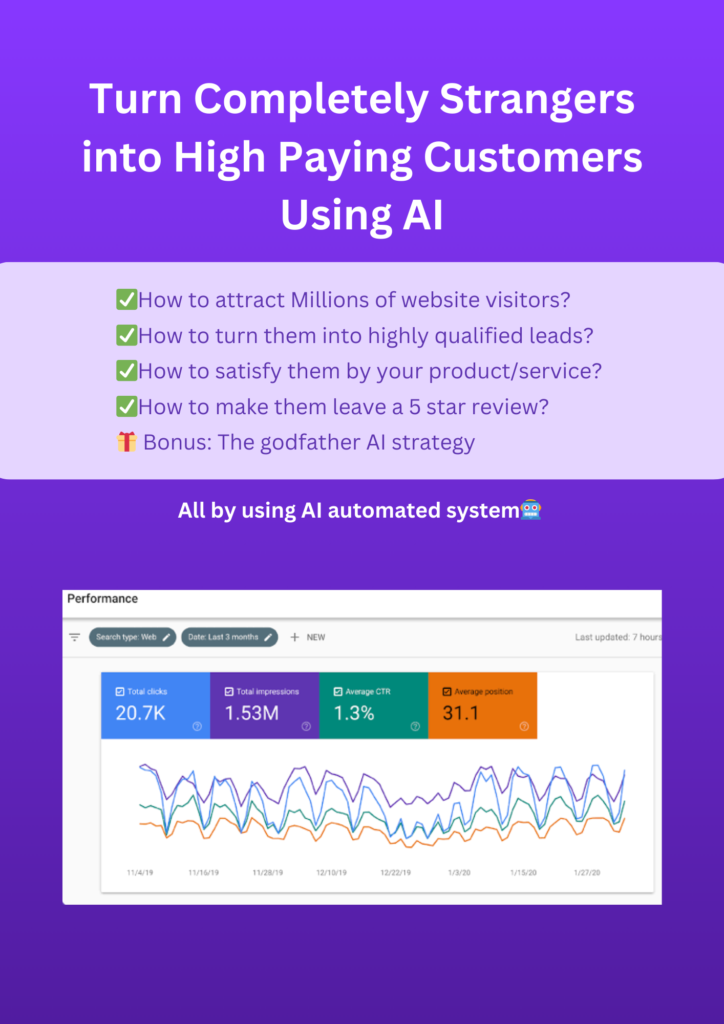Introduction

Building and leading a successful growth marketing team requires strategic planning, effective management, and a deep understanding of market dynamics. Here are some tips to ensure your growth marketing team thrives and achieves outstanding results.
Assemble the Right Team
The base of any successful team lies in its members. Ensure your team has various skills, including data analysis, creative content creation, and technical know-how. Diversify your team with experts in SEO, paid advertising, social media, and content marketing. Hiring from different backgrounds brings fresh perspectives and innovative ideas.
To find the right talent, consider using a structured interview process that includes technical assessments and behavioral questions. For instance, ask candidates how they have handled specific challenges in their previous roles, such as a drop in website traffic or a poorly performing campaign. This approach helps ensure that you hire individuals who are not only skilled but also adaptable and innovative.
Set Clear Goals and KPIs
Defining clear goals and key performance indicators (KPIs) for the projects and the team is essential for tracking progress and achieving success. Goals should match with the overall business objectives and values and be broken down into short-term and long-term targets. KPIs help track progress and measure success.
For instance, metyou’reike bounce rate and time on page website’s version percentage are crucial to improve your website’s conversion rate.
A practical example is setting a goal to increase website conversion rates by 20% within six months. KPIs for this goal could include:
- Bounce rate reduction by 10%
- Average session duration increased by 15%
- Conversion rate improvement from 2% to 2.4%
Regularly reviewing these metrics helps you make necessary adjustments to your strategies.
Foster a Collaborative Environment
Encourage collaboration within your team. Regular meetings and brainstorming sessions can generate new ideas and solutions. Tools like Slack or Trello can facilitate communication and project management, making sure everyone is on the same page. Collaboration fosters creativity and ensures all team members contribute to their fullest potential.
For example, implementing a weekly brainstorming session where team members can pitch ideas and discuss ongoing projects can lead to innovative solutions and improved team cohesion. Encourage open communication and create a workplace where the team feels comfortable and safe sharing their thoughts and feedback.
Invest in Continuous Learning
The digital marketing landscape is constantly evolving. Invest in training and professional development through courses, webinars, and conferences. For instance, the American Marketing Association offers a variety of resources for marketers looking to enhance their skills.
Make up opportunities for your team to take part in industry conferences, participate in online courses, and obtain certifications. Enrolling in courses from platforms like Coursera or Udemy can help team members stay current with the latest marketing techniques, tools and learn growth marketing strategies to drive success.
Utilize Data-Driven Decision Making
Growth marketing is heavily reliant on data. Ensure your team is proficient in using analytics tools like Google Analytics, SEMrush, and HubSpot. Review data regularly to understand what’s working and what’s not. Data-driven decisions help optimize marketing strategies and improve ROI.
For instance, if you see that a blog post is driving significant traffic but has a high bounce rate, investigate why visitors leave. It could be because of slow page load times or irrelevant content. Use this data to make informed decisions and execute changes that enhance user experience and engagement.
Focus on Customer Experience
Customer experience should be at the heart of your growth marketing strategy. Understand your audience’s needs and preferences through surveys, feedback, and social listening.
Personalized marketing campaigns can significantly enhance customer satisfaction and loyalty. According to a study by PwC, 73% of consumers point out that customer experience as an essential factor in their purchasing decisions.
Implementing tools like chatbots and personalized email marketing can improve customer interactions. A chatbot can provide instant support and answer common questions, while customized email campaigns can offer customized product recommendations according to past purchases and browsing behavior.
Optimize Your Digital Assets
Your digital tools, including your website, landing pages, and social media profiles, should be optimized for performance.
Collaborate with a landing page design agency to ensure your pages are visually appealing, user-friendly, and conversion-focused.
A well-designed landing page can significantly boost lead generation and sales.
For example, A/B testing different landing page designs can help identify which elements drive the most conversions. Testing variations of headlines, images, and call-to-action buttons can give insights into what resonates best with your audience.
Leverage Cross-Channel Marketing
Use various marketing tools and techniques to reach your audience. Integrate your efforts across email, social media, PPC, SEO, and content marketing and corporate events to create a powerful, cohesive strategy. Cross-channel marketing helps create multiple touchpoints with your audience, enhancing engagement and conversions.
For example, a coordinated campaign that includes a series of emails, social media posts, and paid ads can increase brand awareness and bring more traffic to your website. Make sure that your messaging is consistent across all platforms to reinforce your brand identity and build trust with your audience.
Monitor Competitors
Paying attention to your competitors can provide valuable insights into market trends and opportunities. Use tools like Ahrefs and SimilarWeb to analyze competitors’ strategies and identify gaps in your approach. Competitor analysis can help refine your strategy and stay ahead in the market.
For instance, if a competitor’s new content marketing strategy is gaining traction, analyze their approach and identify what makes it successful. Adapt and improve upon their strategies to maintain your competitive edge.
Encourage Innovation
Innovation is critical to staying competitive. Motivate your team to experiment with new ideas and strategies. Allocate time and resources to test new approaches, whether a new social media platform or a novel content format. Innovation keeps your marketing strategies fresh and engaging.
For example, testing emerging platforms like TikTok for short-form video content can help you reach younger audiences and stay ahead of trends. Encourage your team to think out of the box and explore unconventional marketing tactics that could set your brand apart. Utilizing influencer marketing can also be a powerful way to connect with your target audience, as influencers often have dedicated followers who trust their recommendations. To collaborate effectively with brands, influencers must ensure they provide a comprehensive media kit template that showcases their reach, audience demographics, and previous successful partnerships.
Measure and Adjust
Regularly measure the effectiveness of your marketing campaigns. Use A/B testing to check what works best and adjust your strategies accordingly. Flexibility and versatility are crucial in a fast-paced digital environment.
According to the US Small Business Administration, continuous measurement and adjustment can significantly enhance marketing effectiveness.
For instance, if an email campaign performs differently than expected, analyze the data to identify potential issues, such as low open or click-through rates. To improve performance, experiment with various subject lines, content, and design elements.
Build Strong Relationships
Building strong links within your team and with other departments is vital. Good relationships facilitate better communication, collaboration, and overall efficiency. Additionally, fostering partnerships with external agencies and vendors can provide access to specialized abilities and resources.
For example, collaborating with your sales team can provide precious insights into customer pain points and preferences. This information can help customi\e your marketing strategies to address customer needs better and drive more qualified leads.
Emphasize Transparency and Accountability
Transparency and accountability are essential for setting a trustful environment and ensuring that everyone is aligned with the team’s goals. Communicate the team’s progress, challenges, and achievements regularly. Use tools like dashboards and reports to provide visibility into key metrics and performance indicators.
For instance, holding monthly review meetings where team members present their progress and discuss any obstacles can foster a culture of accountability. Open and honest communication is encouraged to address issues right away and find collaborative solutions.
Develop a Strong Brand Voice
A strong brand voice is the base for creating a consistent and memorable customer experience. Define your brand’s personality, tone, and messaging guidelines. Make sure that all marketing materials, from social media posts to email campaigns, reflect your brand voice.
For example, if your brand is known for being friendly and approachable, ensure this tone is evident in all customer interactions. Consistency in brand voice helps build trust and loyalty with your audience.
Implement Customer Feedback Loops
Listening to your customer’s needs and preferences and incorporating their feedback is crucial for continuous improvement. Implement feedback loops through surveys, reviews, and direct interactions. Use this feedback to your advantage to improve your products, services, and strategies.
For instance, if multiple customers mention a common issue with your website’s navigation, take this feedback seriously and make necessary improvements. Customer feedback is valuable for identifying areas for development and increasing overall customer satisfaction.
Stay Agile and Adapt to Change
The marketing landscape constantly changes, and staying agile is essential for success. Be prepared to change up your strategies based on market trends, customer behavior, and technological advancements. Flexibility and adaptability are crucial to staying ahead of the competition.
For example, the rise of voice search has changed how people find information online. Modifying your SEO strategy to include voice search optimization can help you capture this growing market segment.
Focus on Long-Term Growth
While short-term gains are significant, focusing on long-term growth is crucial for sustained success. Develop strategies that prioritize customer retention and brand loyalty.
For instance, implementing a customer loyalty program can incentivize repeat purchases and foster long-term relationships. Offering never-seen-before content, discounts, or early access to new products can keep customers engaged and loyal to your brand.
Utilize Advanced Marketing Technologies
Leveraging advanced marketing technologies can significantly enhance your team’s capabilities and efficiency. Tools like marketing automation, AI, and machine learning can streamline processes and provide valuable insights.
For example, AI-powered tools like chatbots can improve customer service by responding instantly to common queries. Marketing automation platforms like HubSpot or Marketo can help manage and optimize campaigns, allowing your team to focus on strategic tasks.
Create Compelling Content
Leveraging advanced marketing technologies can significantly enhance your team’s capabilities and efficiency. Tools like marketing automation, AI, and machine learning can streamline processes and provide valuable insights.
For example, AI-powered tools like chatbots can improve customer service by responding instantly to common queries. Marketing automation platforms like HubSpot or Marketo can help manage and optimize campaigns, allowing your team to focus on strategic tasks.
Measure Success and Celebrate Wins
Finally, regularly measure your efforts’ success and celebrate big and small wins. Recognizing and rewarding achievements boosts team morale and motivation. Tools like Google Analytics and CRM systems track performance and report on critical metrics.
For example, if a campaign exceeds its targets, celebrate the achievement with your team. Recognizing individual contributions and celebrating collective successes fosters a positive and motivated team culture.
Conclusion
By following these tips, you can lead a dynamic, efficient, and successful growth marketing team.
Remember, the key to growth marketing lies in continuous improvement, data-driven strategies, and a deep understanding of your audience.
Leading a successful growth marketing team is challenging but rewarding.
By gathering the right team, setting clear goals, fostering collaboration, and focusing on data and innovation, you can drive significant growth for your organization.

